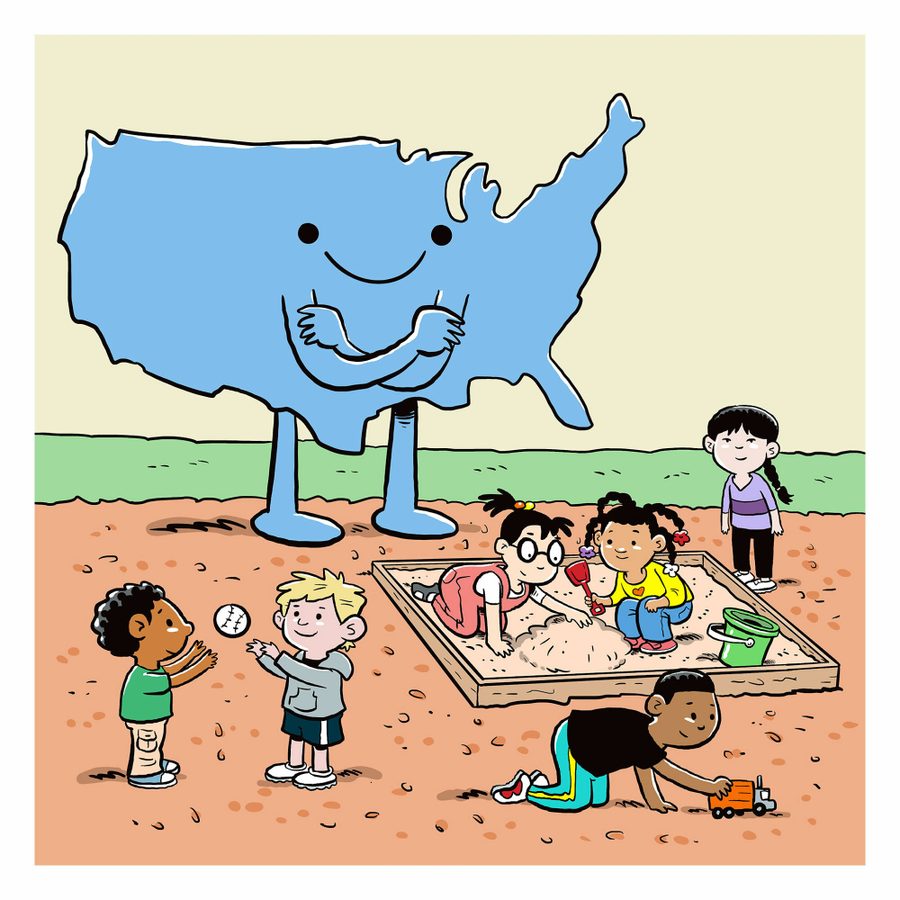Universal Child Care Could Revolutionize the Economy
The pandemic has exposed the utter lack of support for working parents. Universal child care is a completely workable solution.
In These Times Editors

uni • ver • sal child care
noun
1. A publicly funded system to provide free, high-quality care and early education for all children.
Is universal child care possible?
As with healthcare, paid family leave and most other nice things, the United States is an outlier among rich countries when it comes to support for parents with young children. The U.S. once had an immensely effective universal child care program. During WWII, the federal government funded public child care centers in communities where women had stepped into the workforce. But when the war ended, so did the child care.
While it lasted, the Lanham Act established centers that cared for over half a million children. Well-trained and well-paid educators taught classes of no more than 10. Women of color were hired, though some of the centers were segregated. Doctors and nurses provided check-ups on- site. The cafeteria even sent mothers home with prepared dinners.
What are our chances of getting this again?
Trending upward! Child care is taking center stage in President Joe Biden’s “Build Back Better” agenda, a series of big-ticket spending plans before Congress.
The pandemic exposed that our child care system — like so many other systems— is fundamentally broken. More than half of Americans with young children already lived in “child care deserts,” and pandemic lockdowns resulted in a wave of child care center closures. More than 350,000 child care jobs disappeared in the first months of the pandemic.
Biden’s recently announced $1.8 trillion American Families Plan invests $225 billion in a national, high-quality child care program, as well as training and better wages for child care providers, who are primarily women (93%) and disproportionately Black, Asian and Latinx. It also calls for $200 billion to support free, universal preschool.
Child care workers are hopeful that the plan represents a historic shift towards making care jobs a national priority and put- ting working Black, Asian and Latinx women first, though it fails to address undocumented child care workers.
OK. But is child care really “infrastructure”?
If society expects people to reproduce and work long hours to get by, and infrastructure is what allows society to function, then obviously yes.
What’s more, if American women participated in the labor force at the rates of women in countries with more robust public child care (rather than stayed home), then the U.S. economy would expand by approximately $500 billion a year.
By prioritizing child care, we can offer a major boost to an underpaid and underappreciated workforce and throw a lifeline to working parents.
This is part of “The Big Idea,” a monthly series offering brief introductions to progressive theories, policies, tools and strategies that can help us envision a world beyond capitalism. For recent coverage related to this Big Idea, see Joe Biden’s Progressive Economic Turn Was Shaped By Social Movements and Toward Radical, Queer, Erotic Movement-Building.








